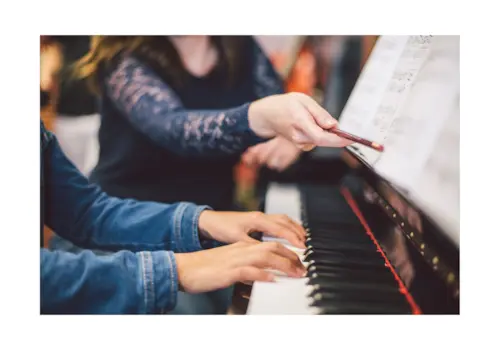The left hand can pose problems for many pianists. We take a look at how to make the most out of it
If you examine some beginner method books, you might notice that a significant number focus on the right hand and right-hand music for pages – sometimes half a book!
This is a serious misnomer, because then students inevitably find reading the left-hand part that much harder than they would have done if they had learnt both right- and left-hand musical lines at the same time from the beginning. Also, the right hand will often play the melody in a piece, as well as more complex passagework, and, therefore, students tend to focus on it that much more.
Once the left hand has fallen behind, catching-up becomes a never-ending issue, and this can have a knock-on effect later on when it will become increasingly necessary for the left hand to keep up with the right. What can we do to work at our left hands, so that they are ready for these demands?
1. Practise the same section of music in both hands
Providing you have no current issues actually reading left-hand notation, the best advice is to play exactly the same material in each hand; whatever you learn in the right hand should also be practised in the left.
This works well with studies, scales, arpeggios and short exercises. Many students are probably introduced to this concept via scales and arpeggios, but to really progress, studies can be very helpful; if played and practised correctly, they will really aid flexibility, speed and dexterity. If you plan to practise any technical work, make sure that you work at the left and right hands in equal measure.
2. Ensure that the movements in your right hand are 'mirrored' in your left hand
My students usually play certain Czerny studies; elementary students could try the 101 Daily Studies Op 261, intermediate students might like to look at The School of Velocity Op 299, and advanced students can try the Art of Finger Dexterity Op 740. I select studies which feature running scale passages in both hands, offering the opportunity for students to observe their movements. When watching how you move, the right and left hand should ideally employ the same body movements, that is, keeping both hands flexible, loose, and fingers, firm.
The same movements made with each hand, provide a chance to build firmer fingers, simultaneously. Perfect coordination takes time and patience.

All three of these Czerny books are full of fantastic exercises for strengthening the left hand
3. Try 'reverse 'practice'
Another strategy is 'reverse practice': playing the right-hand line (treble clef) in the left hand, and vice versa. This can be beneficial, too, if done slowly. It can be a little confusing to start with, but you don’t have to play complete works in this fashion; you can benefit from small sections.
4. Practise the left hand two octaves higher for more clarity of sound
Playing two octaves higher than written allows you to hear what is being played; notes can sometimes sound ‘muddy’ and unclear in the bass register.
Next, play your piece hands together but play the left-hand part above the right; ostensibly the left hand will play exactly the same notes as written, rather like the suggestion above (playing two octaves higher) but with the right hand playing its material underneath. This is quite a tricky option, but it can be helpful.
5. Practise the left hand with a deeper touch than that of the right
This works well during unison passages. Without straining the hand, apply slightly more pressure to each finger when playing every note in the left hand (for just a bar or two to begin with), and lighten the right-hand touch, so you can clearly hear what is being played in the left hand.
Make the left hand into the ‘melody’ and try to ‘sing’ its musical line, even if it’s just the accompaniment. Drawing attention to the left hand will help to focus on it. Gradually, it will feel stronger and more controlled.
For more advice, take a look at pianist Graham Fitch's video lesson below which includes some advice on how to relax your left hand.








